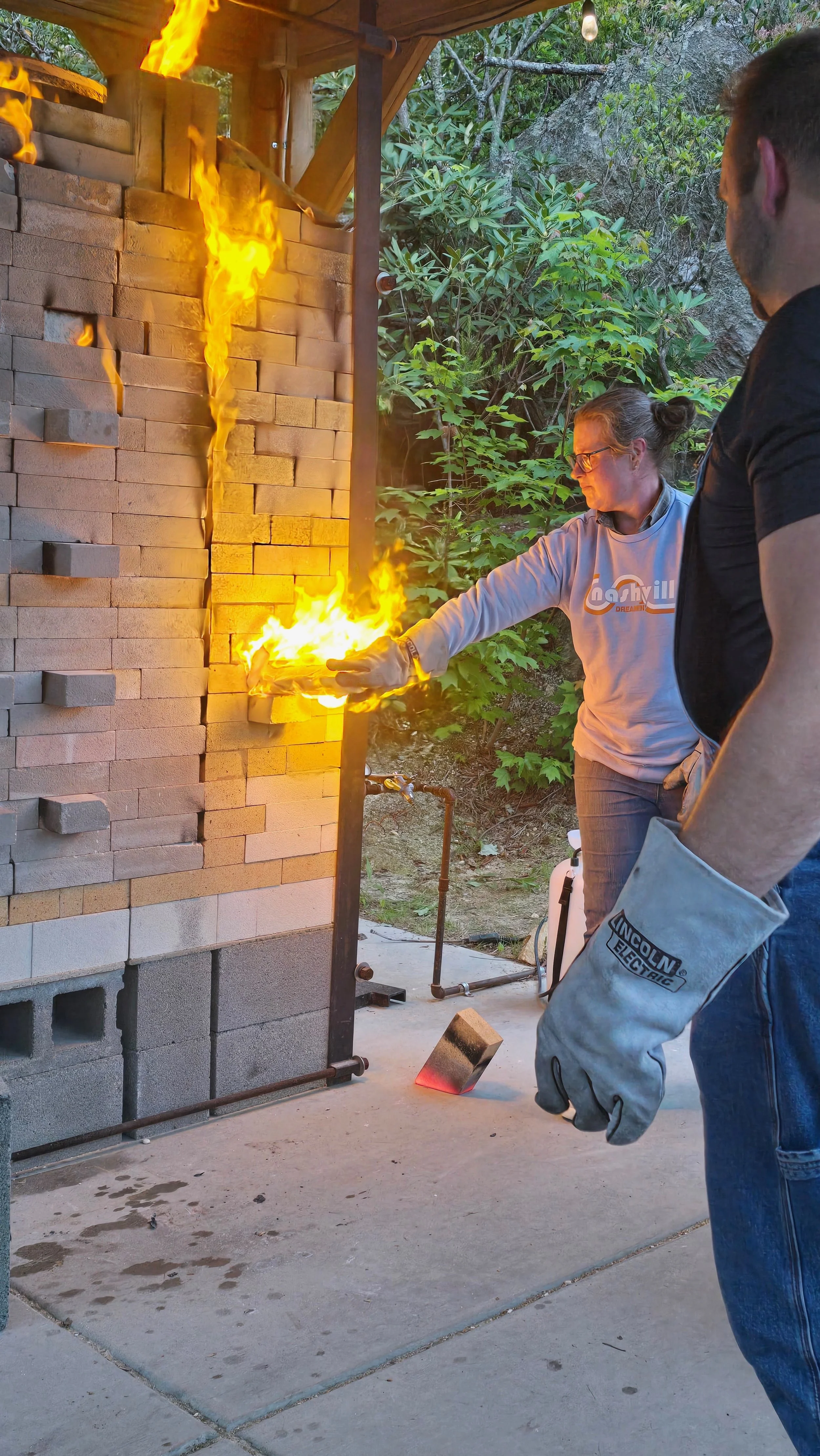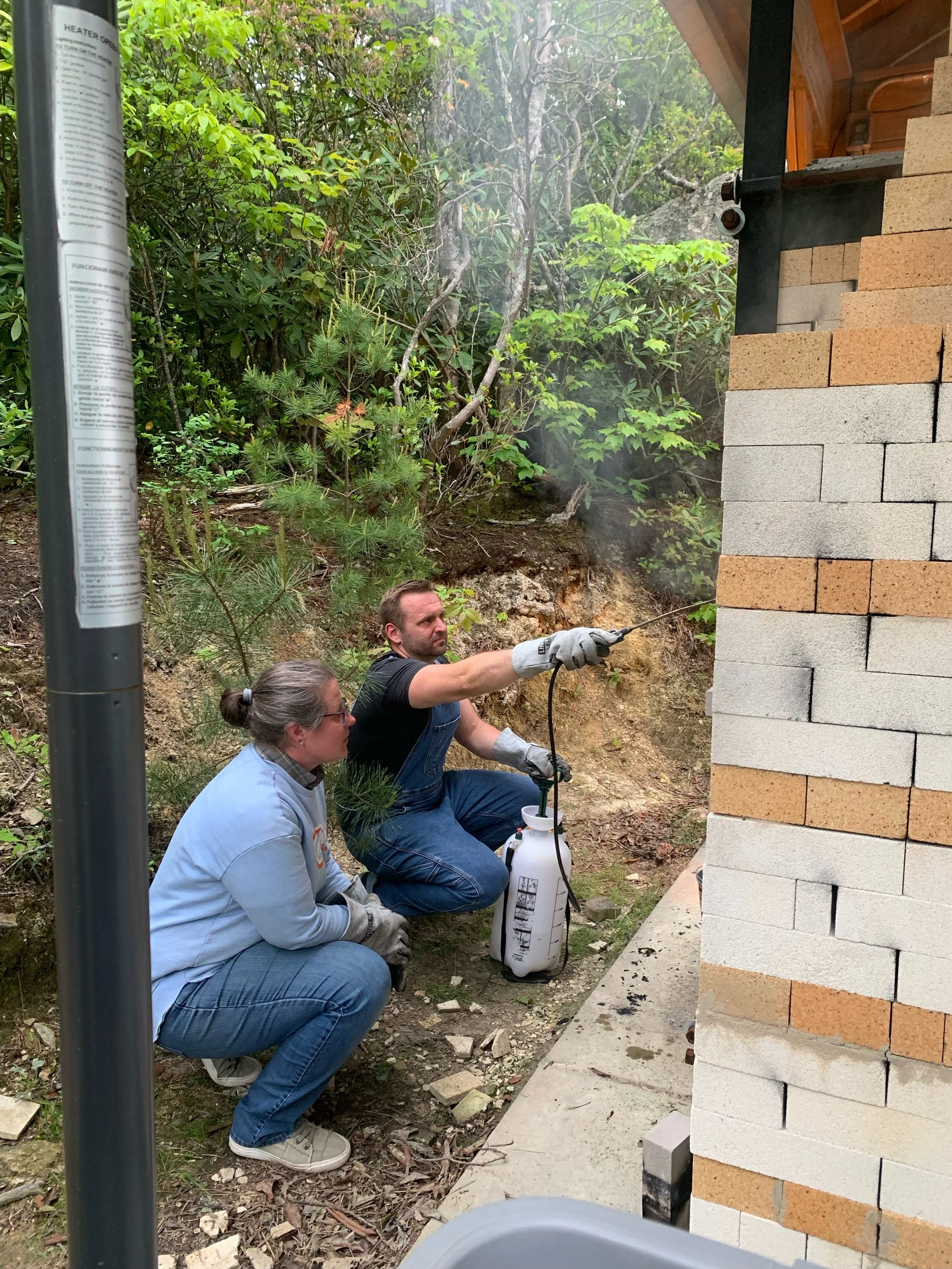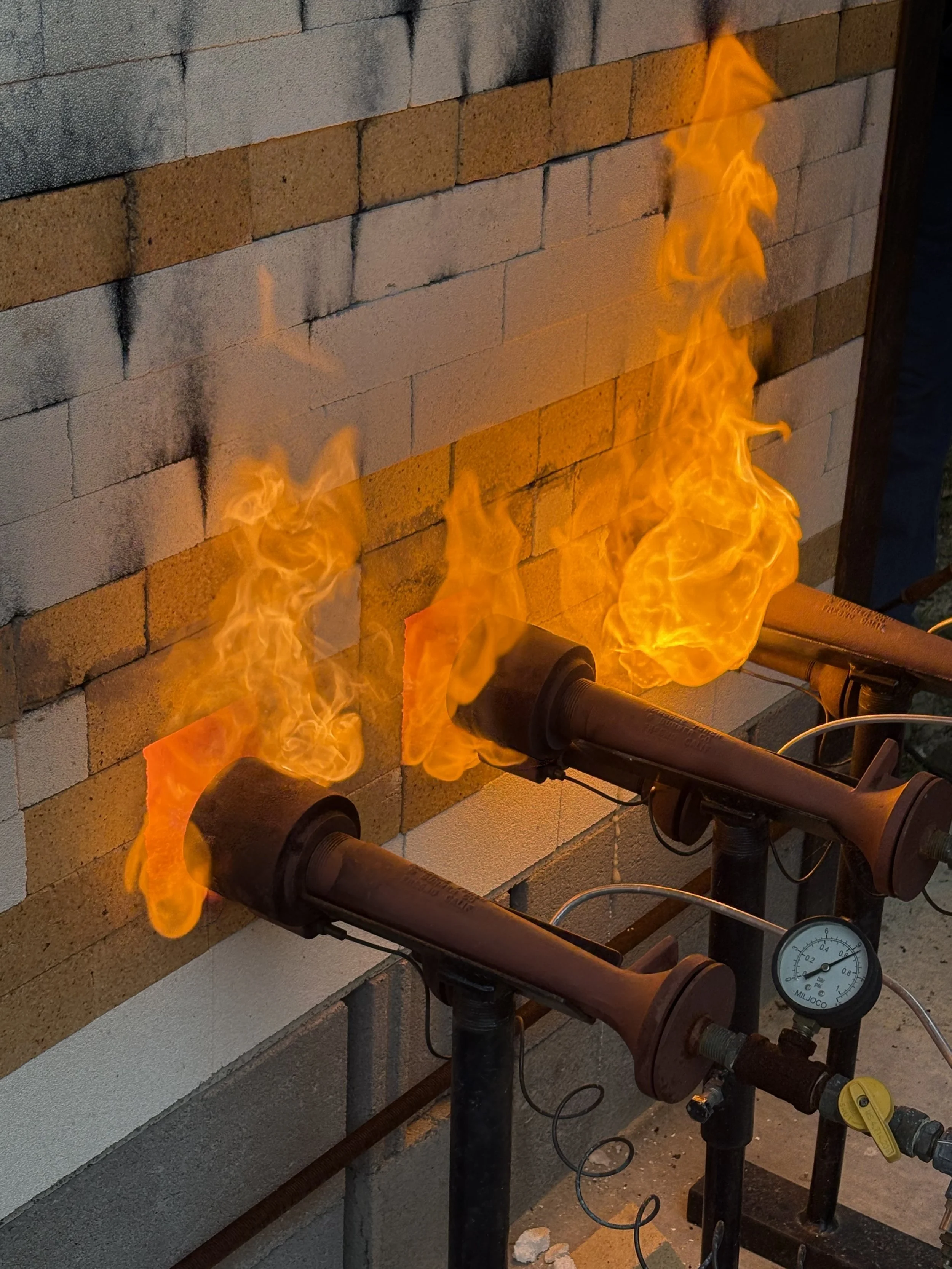
What is Soda Firing?
Most modern pottery is fired in an electric kiln. This method is generally preferred for its convenience and simplicity, but it produces limited variation in surfaces. Much of my work is fired in an outdoor, gas-fired kiln at temperatures of over 2,300 degrees in a highly interactive process requiring constant monitoring and regular adjustments over a 24-hour period.
Soda firing is collaborating with the kiln to produce one-of-a-kind atmospheric effects on pottery. Restricting oxygen access to the kiln creates a “reduction” atmosphere that chemically alters the clay and glazes to yield unique color variations and glaze effects. As the kiln reaches 2,000 degrees Fahrenheit, I add soda ash/baking soda that volatilizes and rides the flames through the kiln and deposits as a glaze on the pottery.
Soda firing creates a complex story of the path of the flames through the pots and kiln. The effects of soda firing are unpredictable and can cause a higher rate of loss in a firing, but they also create an account of how the flame moved through the kiln and through the pottery stacked inside. This mercurial narrative of flame paths moving inside a kiln cannot be created by human hands. It is only through an artist’s collaboration with the kiln that these effects can be achieved.




